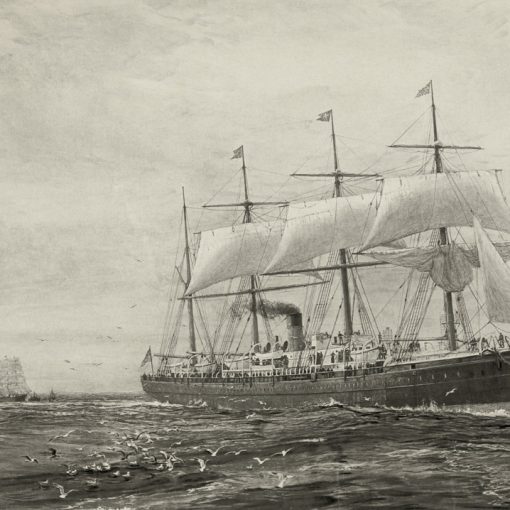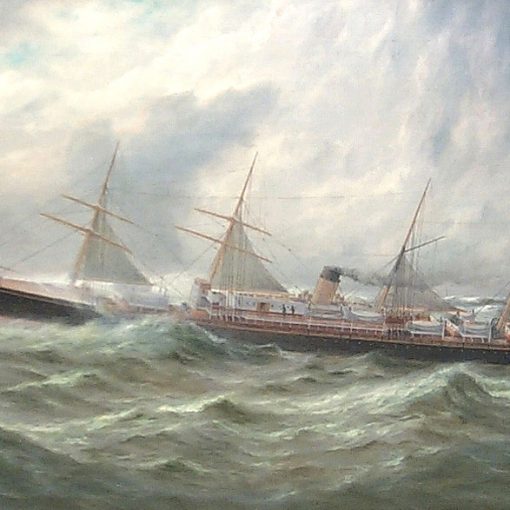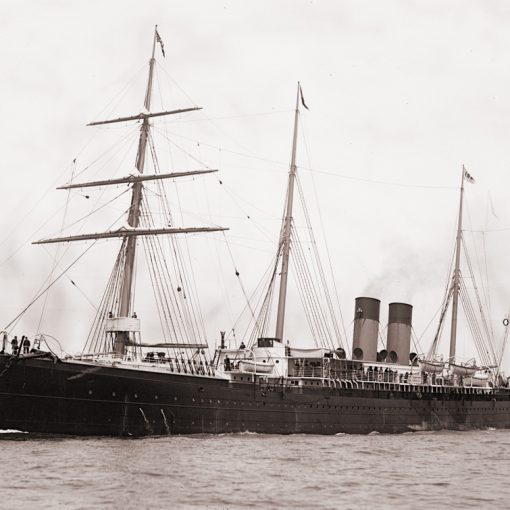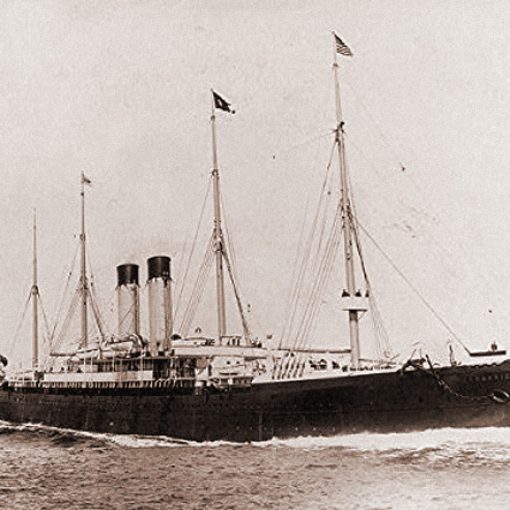1904 – 1933
The White Star Line had launched their first vessel of the ‘Big Four’ class already in 1901. She was the Celtic, but at the time of her launch, the world, and the White Star Line, was unwitting of that the Celtic would expand into a quartet. In 1903 the Cedric was born, and she was the first vessel ordered with four ships in mind. The Big Four was built for the glory of Britain, and – of course – to establish the White Star Line as the best shipping company in the world. These ships were the first, with the pioneering Celtic, to exceed the Great Eastern’s tonnage. All of the Big Four were to be over 20,000 tons.
The third of the class came in 1904. The Baltic had been launched the previous year, and with her almost 24,000 tons, she surpassed her earlier sister Cedric, and became the largest vessel in the world. Actually, the Baltic had been laid down with the Cedric’s size in mind, but during construction, some 20 feet was added amidships with the exclusive title in mind. The Big Four have never been remembered for their speed, and like the other ships of the class, the Baltic would have an average speed of somewhere around 16 knots. But the Baltic had problems in maintaining that, somewhat slow speed. The added length during the construction made her too heavy for her engines that were designed for a ship of the Cedric’s class. Therefore, the Baltic would have future problems in maintaining her schedule. To remedy the engine-problems, more powerful engines were installed, but they used more coal than designed, so these engines could not be used at high power.
In 1907, the Baltic lost the title of being the largest vessel afloat to the new HAPAG-liner Kaiserin Auguste Victoria. With a gross tonnage of 24,581, she had surpassed the Baltic with a mere 665 tons. Later that year, the Big Four was completed when the 24,541-tonner Adriatic entered service. The Baltic enjoyed the same popularity as her other sisters, and continued on her Liverpool-New York service. Even when the White Star Line changed their home port to Southampton in 1907, she stayed on her old route.
When on one of these voyages towards New York on January 23, 1909, the Baltic received a message on her Marconi-equipment. It was a C.Q.D. from the Marconi station at Siasconsett, Massachusetts telling them that the White Star Liner Republic, bound for the Mediterranean, had collided with the Lloyd Italiano’s Florida, only 64 miles away from the Baltic’s position. This was the first time in history a distress call via wireless had been used, and it proved to be very useful. The Florida had buckled bow but seemed to stay afloat, and all of Republic’s passengers were transferred over to the Lloyd Italiano liner. The Baltic found herself lost in fog on her speedy way to the disaster scene. Hours after she had received the distress call, she found the Republic – still afloat, but almost deserted. The damaged Florida now carried a dangerous load of passengers, and risked foundering too. The Baltic arrived just in time, and took on board most of the Florida’s passengers. Since the Baltic had many empty cabins, the undamaged 24,000-tonner seemed a much better place to be for the Republic’s passengers. The Baltic steamed to New York where she off-loaded all of her passengers. The Republic sank thirty-six hours after the collision, but all of her people on board were saved except for three unfortunate passengers who perished in the collision-event. This added to the self-confidence of shipbuilders and owners. A ship-loss with great human loss was more or less unthinkable.
This would be contradicted by one of the most horrible peacetime sea disasters a few years later. On April 14, 1912, the Baltic sent a wireless message to the White Star Line’s new flagship Titanic. The Baltic had been forced to slow down to a crawl by heavy pack-ice miles outside the American coast. The Titanic sunk only two and a half hours after colliding with an iceberg. Over 1,500 people of the people on board the Titanic froze to death or drowned in the icy water because of, among other reasons, no other vessel being able to reach the wounded vessel in time. The Baltic was too far off and resumed her voyage after having received the message that the survivors had been picked up by the Cunarder Carpathia.
In the First World War, the Baltic sailed as a troopship under the Liner Requisition Scheme. In April 1917, she was attacked by the German U-boat UC-66, but managed to flee undamaged. The next months, the Baltic took part in one of the key moments in world history. The Allied Headquarters’ staff and the first American troops were shipped on Baltic to Europe. In memory of this noble deed, she forever carried a commemorative plaque in her main hallway. In December 1918, the Baltic resumed her peacetime service between Liverpool and New York.
The Baltic was getting old, but she carried on with her service just as before and did not lack in popularity during the post war years. In 1926, the ship’s football team won the Atlantic Soccer Team Tournament. The Baltic was the first British ship in history to ever receive that honour.
During the years, the Baltic had received a rumour of being a very reliable and sturdy vessel, and she added to this compliment on December 6, 1929, when she rescued the crew of the schooner Northern Lights outside Newfoundland. But as years went by, and the competition for passengers hardened in the Depression years, the Baltic was considered to be taken out of service. In 1932, she made her final voyage, and was replaced by the newly commissioned motor vessel Georgic. Later that year she was laid up at Liverpool, and in January 1933, she was sold to Japanese scrappers. In February, the Baltic left Liverpool for the last time in order to sail towards Osaka for scrapping.
Specifications
- 729 feet (222.7 m) long
- 75.6 feet (23.1 m) wide
- 23,876 gross tons
- Two four-cylinder quadruple-expansion engines powering two propellers
- 16 knot service speed
- Passenger capacity of 2,875 people









